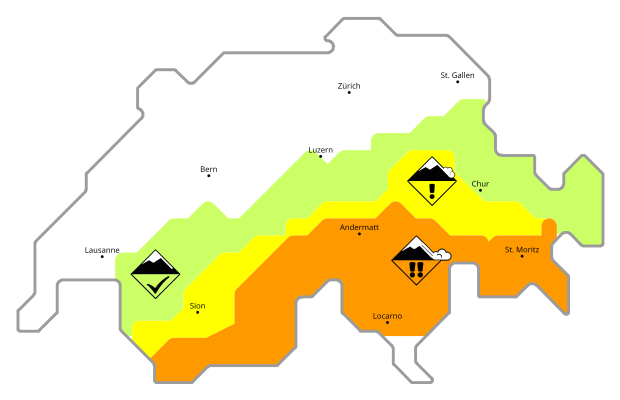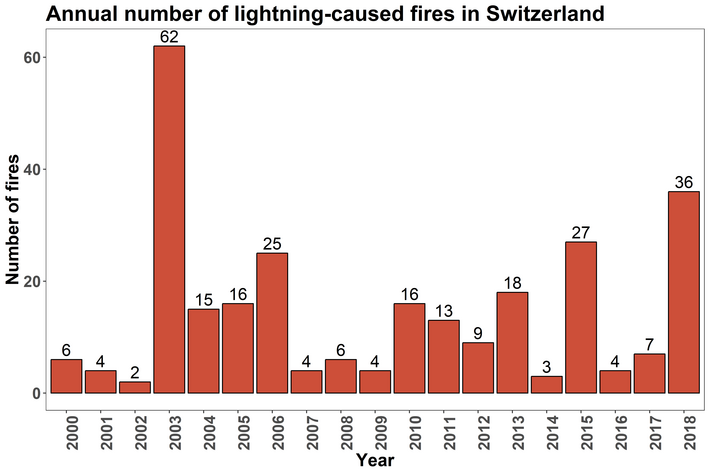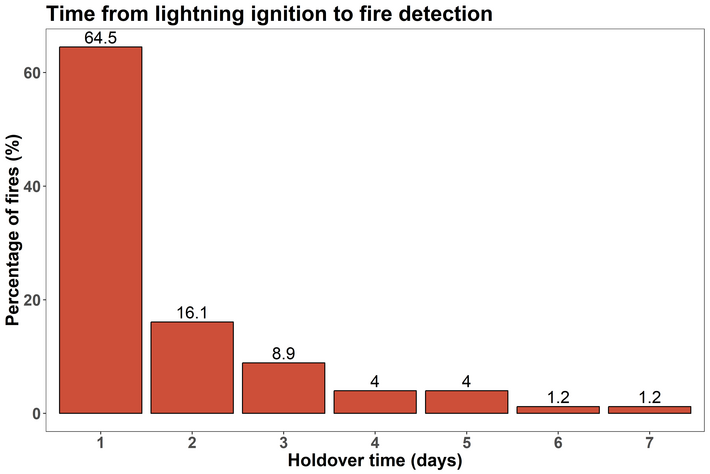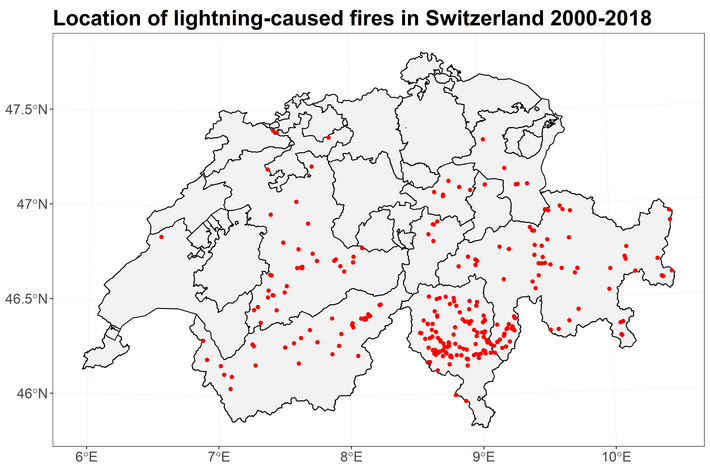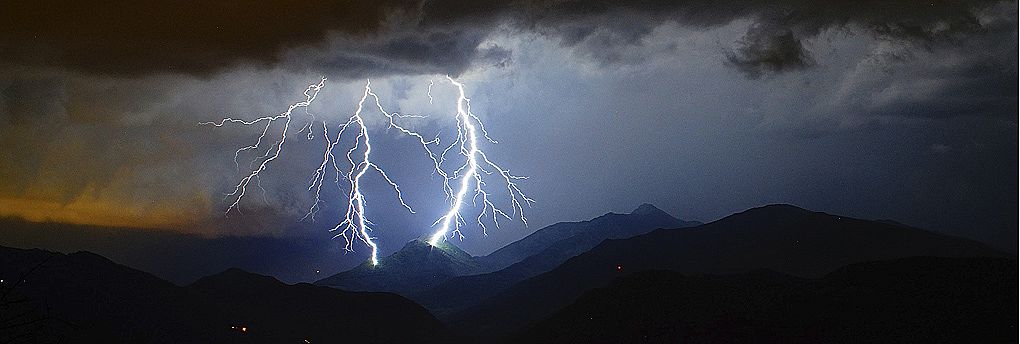
Summer drought influence on lightning-induced fires
In a changing climate, lightning-caused wildfires might increase in Switzerland over the next decades. Our studies aim at understanding patters and conditions under which these fires develop.
Background
In Switzerland, during the period 2000-2018 (i.e. 19 years) 277 lightning-caused fires have been recorded, which represents 12.5% of the total number of wildfires and 8% of the total burned area. However, lightning-caused fires make a more substantial part of the summer forest fires (31% of the fire events and 38% of the burned area from June to August in the period 2000-2018 were caused by lightning). In fact, most of the lightning-caused fires occur during summer months, especially in July and August. This natural phenomenon seems to be especially relevant in case of exceptional summer drought, as it was the case in 2003, 2015 and 2018 in Switzerland. For the next decades, higher temperatures and lower precipitation are predicted for the summer months (CH2018), and dry years such as 2003, 2015 and 2018 are likely to occur more frequently. This climatic scenario may modify considerably the regime of natural fires in the Alps, increasing the number, burned area and severity of lightning-caused fires. Therefore, we need to understand better the patters and conditions under which lightning-caused fires develop.
Preliminary results: linking lightning and forest fires
In a first step, we matched up fire ignitions and lightning data, or in other words, we tried to find the lightning that ignited the fire. We used two kinds of datasets. On the one hand, we obtained information on natural fires during the period 2000-2018 from the Swissfire forest fire database. On the other hand, lightning data in Switzerland were obtained from the European Cooperation for Lightning Detection network (EUCLID). Selecting the lightning that possibly initiated the fire is not a trivial task. Lightning location accuracy can range from few hundred meters to some kilometres, and some fires can smoulder for several days as “holdover fires” since lightning ignition until vegetation can support flaming combustion. So far, we have compared different approaches and selected the most likely candidate lightning.
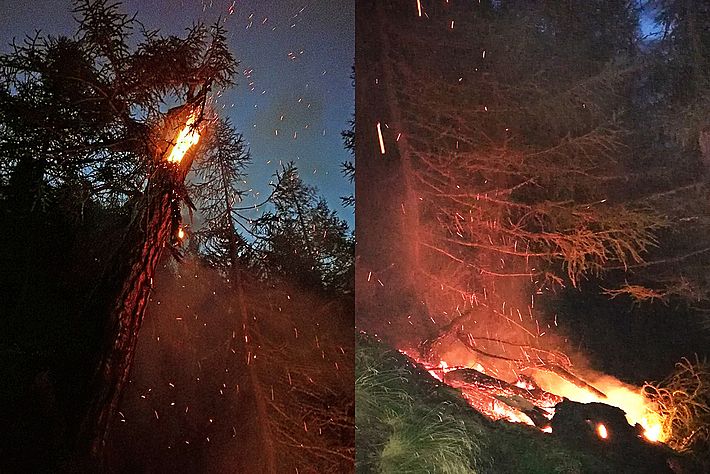
Planned: modelling of lightning-caused fires
The next step is to model lightning-caused fire occurrence. We are collecting data on topography, fuel, climate and weather, with particular emphasis on drought and fire weather conditions (for instance using the WSL fire calculator tool). We are planning to apply Maxent (maximum entropy modelling) in order to find the best combination of variables that explain the probability of lightning-caused ignition. Potentially, this work can be applied to predict future patterns of natural fires based on climatic projections.
